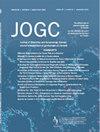残留卵巢综合征假性囊肿形成:卵巢保存的独特后果。
IF 2.2
Q2 OBSTETRICS & GYNECOLOGY
引用次数: 0
摘要
残留卵巢综合征(ROS)是骨盆手术后卵巢保留的结果。ROS的一种独特且未充分研究的表现包括出现假性囊肿形成的患者。这些患者通常有多次盆腔手术史。虽然病因尚不清楚,但卵巢假性囊肿可能是由于炎性粘连形成后继发的排卵进入封闭空间而发生的。在这里,我们描述了一个小队列的假性囊肿形成的ROS患者,以强调合理的方法来诊断和管理这种罕见的情况。本报告引起了对这种罕见但重要的ROS病因的关注。本文章由计算机程序翻译,如有差异,请以英文原文为准。
Pseudocyst Formation in Residual Ovary Syndrome: A Unique Consequence of Ovarian Preservation
Residual ovary syndrome (ROS) is a consequence of ovarian preservation after pelvic surgery. One unique and understudied manifestation of ROS includes patients who present with pseudocyst formation. These patients often have a history of multiple pelvic surgeries. Although the etiology is poorly understood, ovarian pseudocysts presumably develop because of ovulation into an enclosed space secondary to the formation of inflammatory adhesions. Herein, we describe a small cohort of patients with ROS from pseudocyst formation to highlight a rational approach to the diagnosis and management of this rare condition. This report brings attention to this uncommon but important cause of ROS.
求助全文
通过发布文献求助,成功后即可免费获取论文全文。
去求助
来源期刊

Journal of obstetrics and gynaecology Canada
OBSTETRICS & GYNECOLOGY-
CiteScore
3.30
自引率
5.60%
发文量
302
审稿时长
32 days
期刊介绍:
Journal of Obstetrics and Gynaecology Canada (JOGC) is Canada"s peer-reviewed journal of obstetrics, gynaecology, and women"s health. Each monthly issue contains original research articles, reviews, case reports, commentaries, and editorials on all aspects of reproductive health. JOGC is the original publication source of evidence-based clinical guidelines, committee opinions, and policy statements that derive from standing or ad hoc committees of the Society of Obstetricians and Gynaecologists of Canada. JOGC is included in the National Library of Medicine"s MEDLINE database, and abstracts from JOGC are accessible on PubMed.
 求助内容:
求助内容: 应助结果提醒方式:
应助结果提醒方式:


